Europe's largest nuclear reactor enters service in Finland
Story by AFP • Yesterday
Hours after Germany closed out its atomic era by turning off its last three nuclear reactors, the largest single reactor in Europe entered regular production in Finland, its operator said Sunday.

Europe's largest single reactor is expected to remain operational for "at least the next 60 years", according to site operator TVO.© Olivier MORIN
The next-generation Olkiluoto 3, now producing around 14 percent of the country's electricity, is expected to remain operational for "at least the next 60 years", according to the site's operator TVO.
Germany meanwhile officially ended decades of nuclear energy use by turning off its last three nuclear reactors on Saturday.
The Isar 2 reactor in the southeast of the country, the Neckarwestheim facility in the southwest and Emsland in the northwest were disconnected from the electricity network before midnight.
Europe's largest economy had been looking to leave behind nuclear power since 2002, but the phase-out was accelerated by former chancellor Angela Merkel in 2011 after the meltdown at the Fukushima nuclear plant in Japan.
In Finland, the European pressurised water reactor (EPR) was meanwhile put into regular service some 18 years after construction on the reactor began, and 14 years after it was originally scheduled to go into commercial production.
After it first reached full power in September last year, it was supposed to enter commercial production in December, but the start was pushed back several times during its testing phase.
- 'Trump card' -
Built by the French-led Areva-Siemens consortium, the reactor was first started up in December 2021 and connected to the Finnish power grid in March last year.
"Test production has been completed and regular electricity production started today," TVO said. "From now on, about 30 percent of Finnish electricity is produced in Olkiluoto," which already had two reactors.
With a capacity of generating 1,600 megawatts, Olkiluoto 3 is the single largest nuclear reactor in Europe, while Ukraine's Zaporizhzhia plant, with its six reactors, is the largest nuclear plant.
Finland had been hoping to rely on the new reactor for its electricity needs earlier this winter, given fears of energy shortages after Russia, a major supplier to Europe, invaded Ukraine and cut off gas exports in response to Western sanctions.
Jarmo Tanhua, CEO of TVO, in a statement called the "environmentally friendly electricity production" one of Finland's "top trump cards".
- Safety vs climate -
The EPR was designed to relaunch the European nuclear industry after the Chernobyl catastrophe of 1986, and was touted as offering higher power and better safety.
But several EPR projects have been plagued by delays and billions of dollars in cost overruns.
At the end of last year, France's state-owned energy group EDF had to announce another six-month delay for a new reactor being built at Flamanville, in northwest France, pushing back its projected start to mid-2024.
Hinkley Point in Britain and the Taishan plant in China have also suffered EPR production setbacks, cost overruns and delays.
The two EPR units in China have already entered commercial production, making Olkiluoto 3 the third to go into operation in the world.
Germany's decision to end use of nuclear power was popular in a country with a powerful anti-nuclear movement.
But some have criticised how the decision upped the country's dependence on coal, as it tried to manage an energy crisis caused by the war in Ukraine.
Markus Soeder, the conservative premier of the southern state of Bavaria, called on the federal government to let his state continue using nuclear power.
"As long as the crisis has not ended and the transition to renewables has not been completed, we must use every form of energy until the end of the decade," Soeder told the Bild am Sonntag on Sunday.
Nuclear technology has also seen renewed popularity as a way to reduce carbon emissions, with the Swedish climate activist Greta Thunberg slamming the German move as "a mistake" if it meant burning more coal.
TVO hailed the Olkiluoto 3 reactor as "Finland's greatest climate act", adding that it would "accelerate the move towards a carbon-neutral society".
In Finland, a poll from May 2022 showed that 60 percent of Finns supported nuclear power.
Europe’s biggest reactor caps 14-year delay to begin commercial output
Bloomberg News | April 16, 2023 |
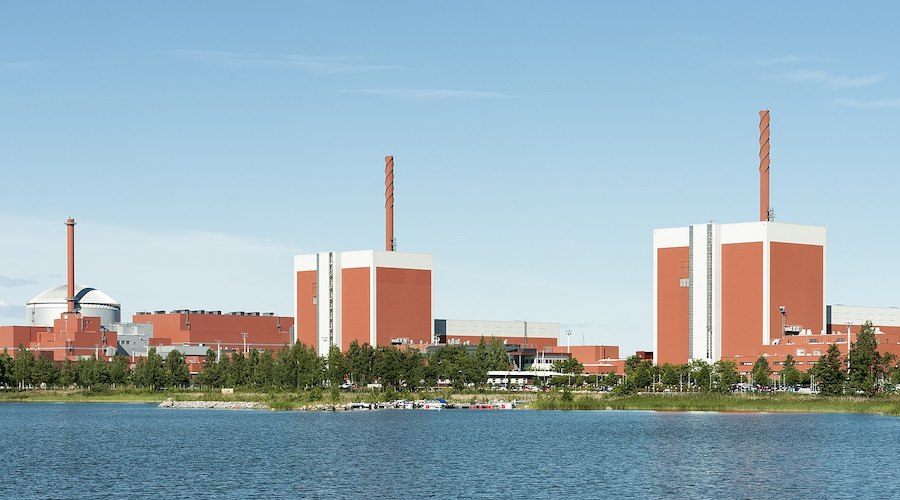
The three reactors of Olkiluoto Nuclear Power Plant in Eurajoki, Finland. (Image by Hannu Huovila / TVO, Wikimedia Commons.)
Europe’s largest nuclear reactor has begun regular electricity production 14 years later than planned, delivering a boost to the region’s energy independence.

The 1,600-megawatt plant sitting on a rocky island that juts into the Baltic Sea on Finland’s west coast entered regular operation in the early hours of Sunday. Olkiluoto-3 is the first new atomic reactor in the Nordic countries since the mid-1980s, and the first in its home nation in more than four decades. About 30% of Finland’s electricity will now be produced on Olkiluoto.
Generating emission-free power for homes and businesses, the start coincides with a nuclear revival in Europe and the diversification of supplies away from Russia. France is among the leaders, just as the continent’s economic powerhouse, Germany, on Saturday disconnected its remaining three reactors from the grid to exit the technology altogether.
“We have seen this shift from many European countries to double down on energy security and ensure domestic supply after the invasion of Ukraine, and this new reactor will help a long way for Finland to achieve this,” said Fabian Skarboe Ronningen, a senior analyst at Rystad Energy AS.
Once set to be the world’s biggest reactor, the facility became a poster child of a nuclear industry promoting itself as a stable and virtually emissions-free power source as renewables expanded. Nuclear power had been out of fashion for years due to fears of accidents tainting the environment and on concerns over what to do with spent fuel, until worries over carbon dioxide emissions and climate change began to sway public opinion.
Finland, however, had bucked the trend, having planned its nuclear expansion without interruption since the early 2000s to overcome a lack of domestic supply of fossil energy and hydropower sources, plentiful in its Nordic neighbors.
Its owner Teollisuuden Voima Oyj also won parliament’s approval for a fourth unit, but ended up never building the project as it focused on getting the third reactor off the ground. Construction of Olkiluoto-3 began in 2005, but huge cost overruns and disputes between the operator and builders saw the start delayed many times from an original 2009 estimate. It was finally made critical — that is its chain reaction started — in December 2021 and the unit connected to the power grid in March 2022.
Fennovoima, a greenfield project with a reactor to be supplied by Gazprom, was terminated in the wake of Russia’s invasion of Ukraine. Meanwhile, state-controlled utility Fortum Oyj recently won permission to extend the lifespan of its two reactors on Finland’s south coast, and is looking into small modular reactors with a number of partners, including in Sweden, where the new government has opened the door to more nuclear power.
The three Olkiluoto units are set to produce almost a third of electricity generated in Finland.
“The opening of this unit will further strengthen the large net exporting role the Nordic region has to the continent,” especially combined with massive wind developments across Sweden, Finland and Denmark, said Rystad’s Ronningen. It will also help make prices more competitive for consumers, he said.
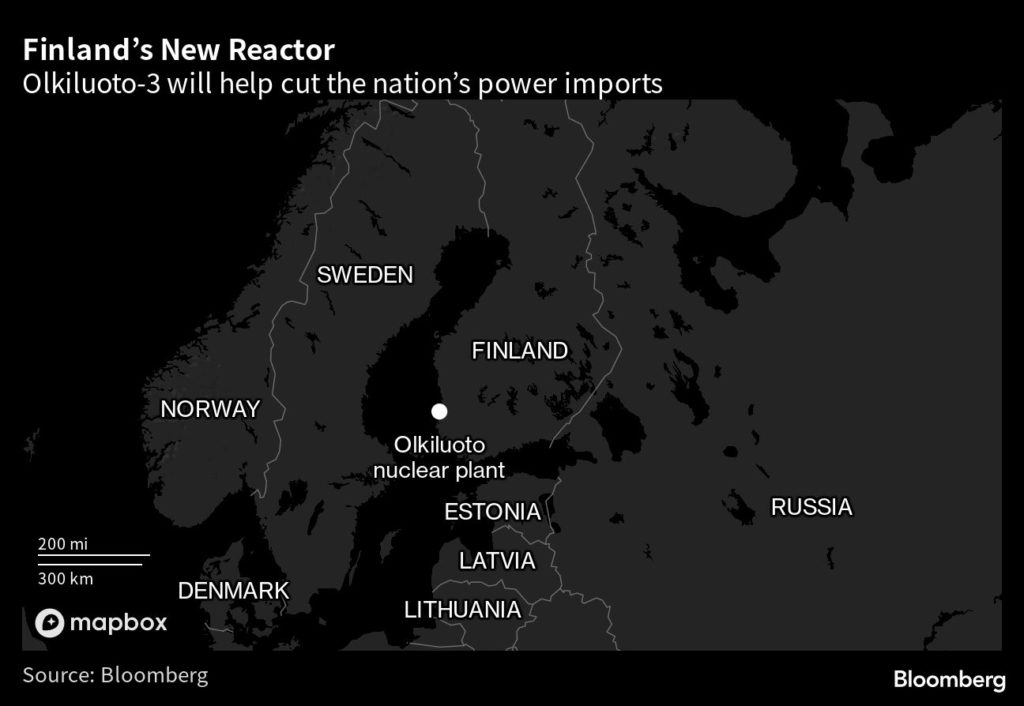
Finland is also building the world’s first permanent repository for spent nuclear fuel in Olkiluoto, deep into the bedrock. The facility will see encapsulated fuel stored in a network of tunnels that will eventually span 50 kilometers (31 miles).
For Finland, Olkiluoto-3 brings welcome domestic production after electricity imports from Russia ended about a year ago amid the fallout from Russia’s war. The cold Nordic nation managed to avoid blackouts that officials had warned were likely this winter, thanks to a 7% reduction in consumption and with the help of relatively mild temperatures.
The mild weather also helped send Nordic power prices down, following the trend elsewhere in Europe. They are now roughly where they were before the energy crisis started.
“The commercial start has been longed for and will finally put an end to all the delays the project has suffered over the years,” said Arne Bergvik, an energy strategist at consultant Sigholm Tech AB.
“It will directly help to replace the loss of power imports from Russia and has already cut Finland’s import needs from Sweden,” he said. Overall, together with other new production capacity it will help to cut prices in Finland, but also the Nordic region, he said.
The unit will run just shy of full power until the end of the year due to limitations on the grid set by the transmission system operator Fingrid Oyj.
(By Lars Paulsson and Kati Pohjanpalo)
Finnish EPR enters regular electricity production
17 April 2023
Test production has been completed at the Olkiluoto 3 (OL3) EPR in Finland and the plant has now started regular electricity production, operator Teollisuuden Voima Oyj (TVO) has announced. TVO said the reactor will soon be declared to be in commercial operation.
.jpg?ext=.jpg) Olkiluoto 3 (Image: TVO)
Olkiluoto 3 (Image: TVO)OL3 attained first criticality on 21 December 2021 and was connected to the grid on 12 March 2022. The EPR, a 1600 MWe pressurised water reactor, then entered a phase of test production during which some 3300 tests were conducted and more than 9000 test reports collated.
The completion of test production was initially delayed after material that had detached from the steam guide plates was found in the turbine's steam reheater in May, which required inspection and repair work. Later, in October, damage was discovered in the internals of the feedwater pumps located in the plant's turbine island during maintenance and inspection work.
The plant was operated at full capacity for the first time in late-September last year.
TVO announced on 16 April that test production at the plant had been completed and regular electricity production has now started.
"This is a historical day, the benefits that we promised OL3 would bring to the Finnish society are realised," said Marjo Mustonen, TVO Senior Vice President for Electricity Production. "I am proud of all the nuclear professionals involved in the project."
OL3 will produce about 15% of Finland's total electricity consumption, while the Olkiluoto plant as a whole will generate about 30% of the country's electricity.
"The production of Olkiluoto 3 stabilises the price of electricity and plays an important role in the Finnish green transition," said TVO President and CEO Jarmo Tanhua. "The electrification of the society continues and environmentally friendly electricity production is undoubtedly one of the top trump cards that Finland has."
The first annual outage at OL3 is scheduled to take place in March 2024.
The Areva-Siemens consortium constructed the OL3 plant under a fixed-price turnkey contract. Construction began in 2005 but there have been various setbacks and delays.
TVO said the contractual end of the Olkiluoto 3 project will occur "once the analyses from the latest test production phase are completed and TVO is in a position to make appropriate decisions on the acceptance of the plant unit and the start of commercial operation. These decisions will be made in the near future".
The first EPR units came online at Taishan in China, where unit 1 became the first EPR to enter commercial operation in 2018 followed by Taishan 2 in September 2019. In Europe, EPRs are currently under construction in France and the UK: Flamanville 3, currently expected to start up in 2023 with commercial operation in 2024; and two units at Hinkley Point C, currently slated for grid connection in 2027 (unit 1) and 2028 (unit 2).
Researched and written by World Nuclear News

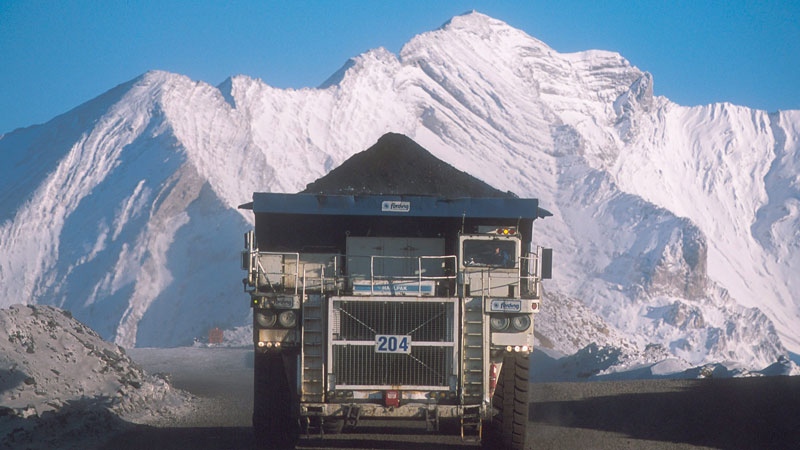
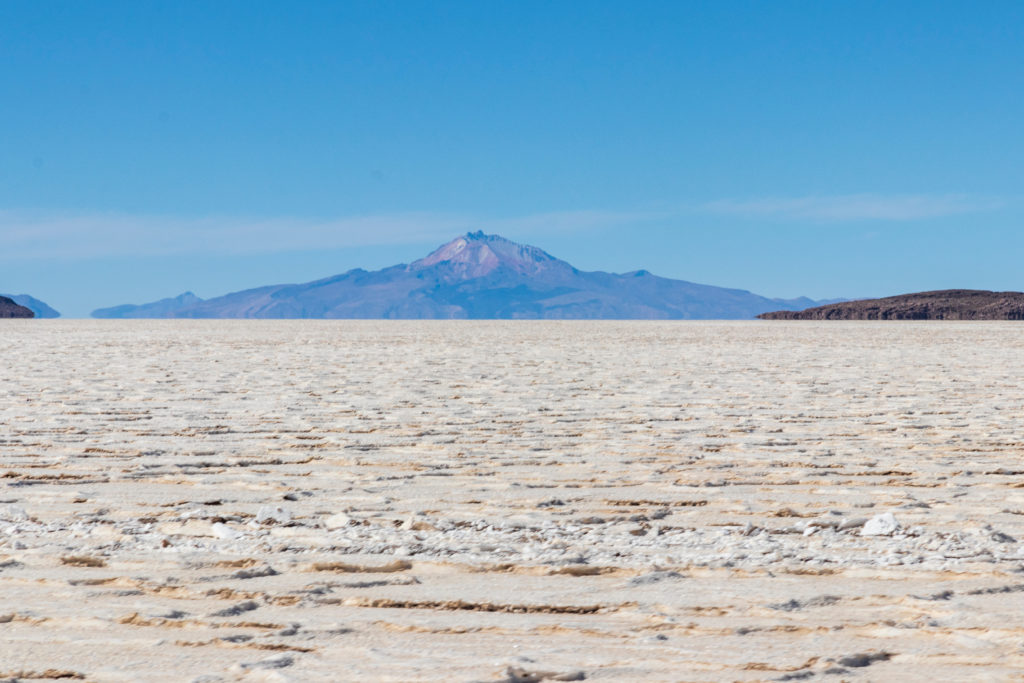
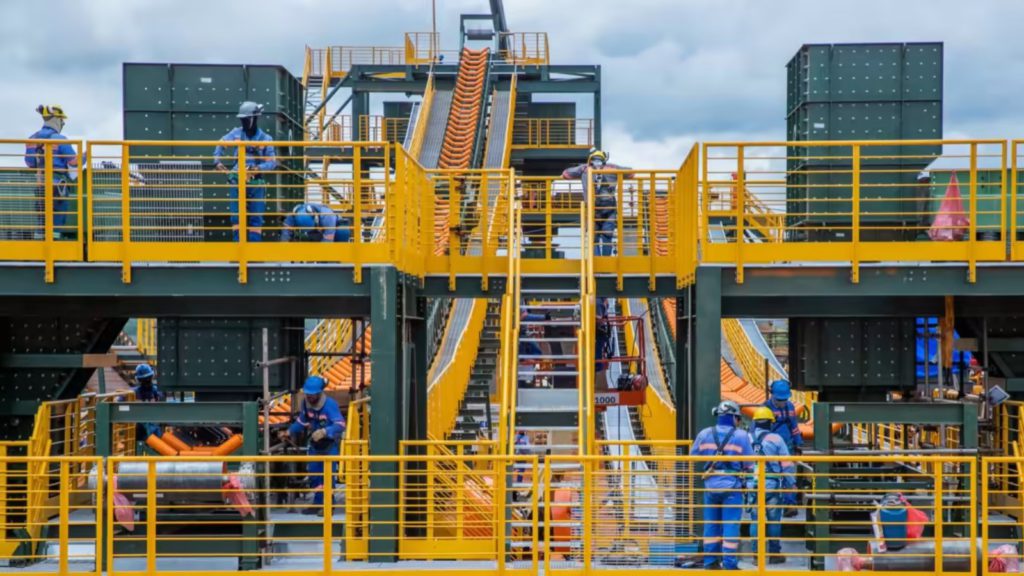
.jpg?ext=.jpg) An Isotek employee processing U-233 inside a glovebox at ORNL (Image: DOE EM)
An Isotek employee processing U-233 inside a glovebox at ORNL (Image: DOE EM).jpg?ext=.jpg) Report author Mark Lynas and RePlanet's Campaigns Coordinator Joel Scott-Halkes hug a canister of nuclear used fuel at the UK's Sizewell nuclear power plant (Image: RePlanet)
Report author Mark Lynas and RePlanet's Campaigns Coordinator Joel Scott-Halkes hug a canister of nuclear used fuel at the UK's Sizewell nuclear power plant (Image: RePlanet).jpg?ext=.jpg) Kotin (on the left) and Gitzel sign the final agreement (Image: Energoatom)
Kotin (on the left) and Gitzel sign the final agreement (Image: Energoatom)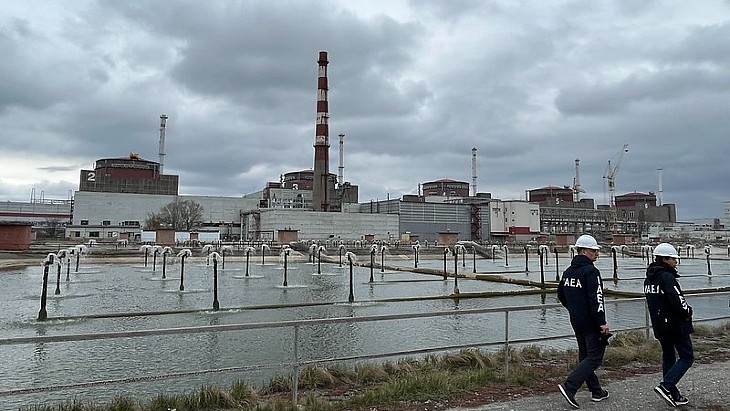 The IAEA's Grossi and IAEA experts toured the plant in March (Image: IAEA)
The IAEA's Grossi and IAEA experts toured the plant in March (Image: IAEA)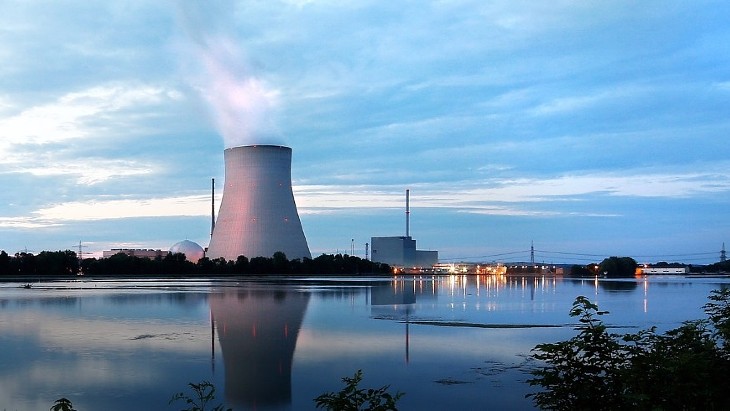 Isar 2 was commissioned in 1988 (Image: Preussen Elektra)
Isar 2 was commissioned in 1988 (Image: Preussen Elektra)